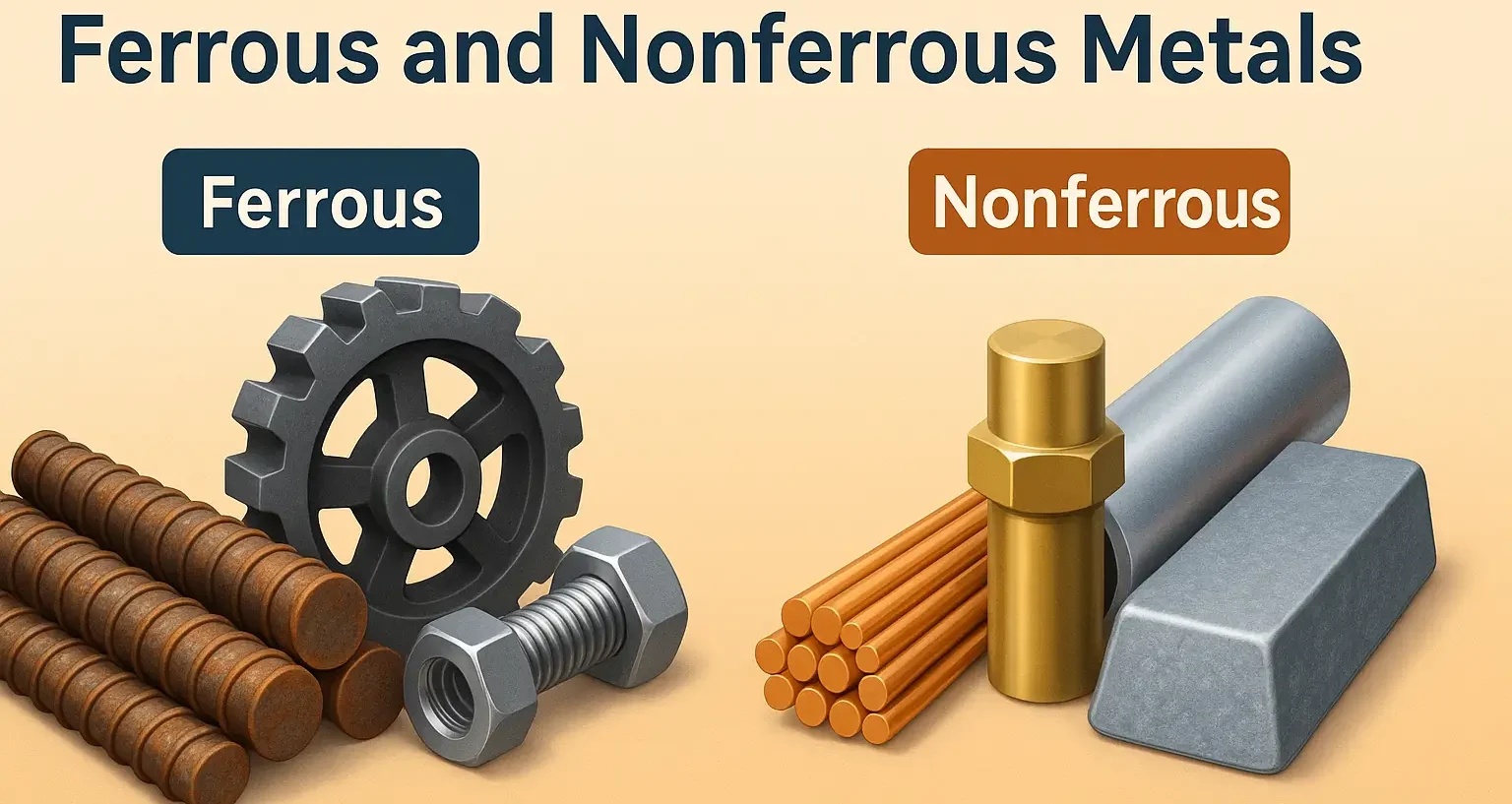Ferrous metals contain iron and are magnetic and strong; nonferrous metals lack iron, resist corrosion, and are used for lightweight and non-magnetic applications.
Ferrous Metals
- Ferrous metals contain iron as their main component.
- These metals are known for their strength and durability and are commonly used in construction, manufacturing, and other heavy industries.
-
Examples:
-
Steel:
- An alloy of iron and carbon, widely used due to its strength and versatility.
- It comes in various forms, such as carbon steel, alloy steel, stainless steel, and tool steel.
-
Cast Iron:
- Contains more carbon than steel, making it hard and brittle.
- Used in heavy-duty applications like engine blocks and machinery.
-
-
Properties:
- Magnetic: Most ferrous metals are magnetic, which is a useful property in many applications.
- High Strength: They offer high tensile strength and durability.
- Corrosion Prone: Generally prone to rusting and corrosion when exposed to moisture and oxygen, although stainless steel and other alloys are exceptions due to added elements like chromium.
-
Applications:
- Construction: Beams, girders, and reinforcing bars.
- Automotive Industry: Engine parts, frames, and suspension components.
- Tools and Machinery: Drill bits, cutting tools, and machinery parts.
Nonferrous Metals
- Nonferrous metals do not contain iron.
- These metals are generally more resistant to corrosion and are lighter than ferrous metals, making them ideal for applications where these properties are desirable.
-
Examples:
-
Aluminum:
- Lightweight, corrosion-resistant, and highly conductive. Used in aircraft, packaging, and electronics.
-
Copper:
- Excellent electrical and thermal conductivity. Used in electrical wiring, plumbing, and electronics.
-
Zinc:
- Used for galvanizing to protect steel from corrosion.
-
Titanium:
- High strength-to-weight ratio and excellent corrosion resistance. Used in aerospace, medical implants, and high-performance engineering.
-
-
Properties:
- Non-Magnetic: Most nonferrous metals are non-magnetic.
- Corrosion Resistant: Generally, more resistant to corrosion and rust.
- Lighter: Often lighter than ferrous metals, which is advantageous in applications where weight is a concern.
-
Applications:
- Aerospace: Aircraft components and structures.
- Electrical: Wiring, connectors, and circuit boards.
- Packaging: Beverage cans and foil.
Click Here to Watch the Best Pharma Videos

